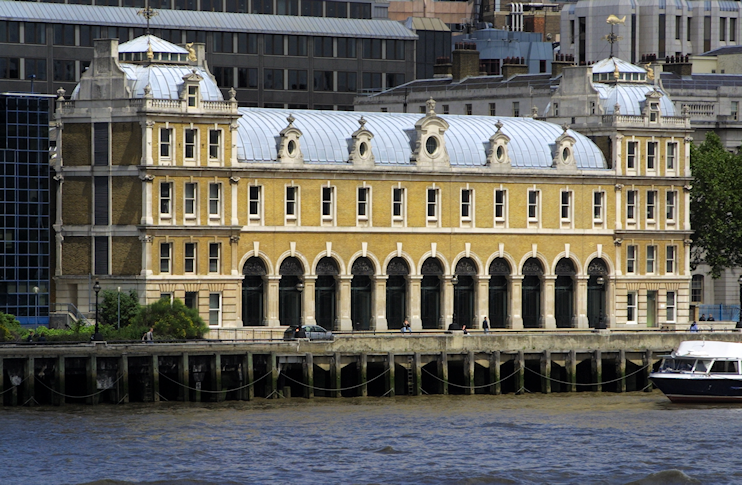Billingsgate
Billingsgate, City of London and Tower Hamlets
A wholesale fish market formerly located in the City of London ward of the same name and now based in Docklands

Billingsgate probably began as a Roman watergate on the Thames and it was used by the Saxons as a small port for general cargo.
Its name simply meant ‘gate of a man called Billing’ but it is said in legend to have been named in honour of Belin or Belinus, a mythical British king who ruled in the early 4th century bc, when he rebuilt the City of London, founded the Tower of London and built Ermine Street and Watling Street. Geoffrey of Monmouth’s Historia Regum Britanniae (History of the Kings of Britain, c.1136) is the primary source of the legend of Belin.
Until the late 15th century most of London’s fish was landed upstream at Queenhithe, after which it began to decline as a result of its inaccessibility to larger vessels and it was superseded by Billingsgate.
The Boss of Billingsgate was some sort of post, probably a drinking fountain, that stood outside the fish market. One source suggests that the boss bore an image of Belin, another that it was shaped like a pot-bellied man. It was a tradition that fish porters would ask passers-by to kiss the boss and, if they refused, they were bumped against it. It was the subject of a comic ballad, entitled ‘The Marriage of London Stone and the Boss of Billingsgate’ (1521), and a play by John Day and others (1603), which has not survived.
Billingsgate’s status was officially recognised by an act of parliament of 1699, which established ‘a free and open market for all sorts of fish whatsoever.’ Sales were made in wooden sheds until the construction in 1850 of the first trading hall, which was replaced by a larger structure in 1877. That building survives today and is shown in the photo above and in the centre of the satellite image below (or off to the right if you’re viewing on a narrow screen).
With the widening of Lower Thames Street in the late 1960s trading at Billingsgate became increasingly impractical and the market transferred to a renovated warehouse at the West India Docks in 1982. (Click here for a Bing bird’s eye view of present-day Billingsgate market.)
Each year since the move the lord mayor of London has presented the nominal rent to the mayor of Tower Hamlets in the form of a gift of fish, which is then distributed to old people’s homes in the borough.
In December 2018 the City of London Corporation announced its acquisition of the 42-acre Barking Reach power station site as a potential new home for its three wholesale food markets: Billingsgate, Smithfield and New Spitalfields.
 The old market caught the attention of many artists, attracted by the opportunity to present life in the raw. Shown on the left, William Hogarth’s exuberant Shrimp Girl (c.1750) hangs in the National Gallery.
The old market caught the attention of many artists, attracted by the opportunity to present life in the raw. Shown on the left, William Hogarth’s exuberant Shrimp Girl (c.1750) hangs in the National Gallery.
The swearing of workers in the market made Billingsgate – and its fishwives – synonymous with coarse language. Unconnectedly, a ‘Billingsgate pheasant’ was a red herring or a bloater.
Postal districts: EC3 (old Billingsgate), E14 (new Billingsgate)
Further reading: Colin Manton and John Edwards, Bygone Billingsgate, Phillimore & Co Ltd, 1989
and CJ Jackson, The Billingsgate Market Cookbook, New Holland (2009)
